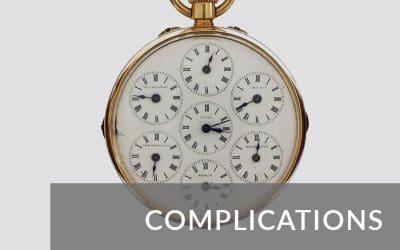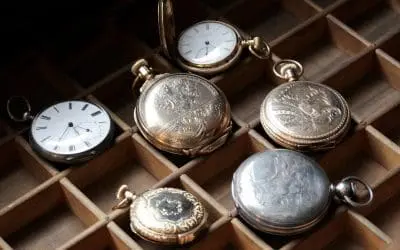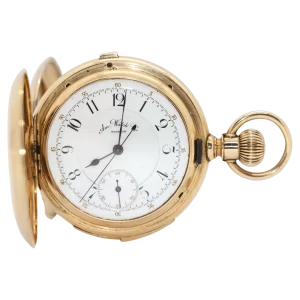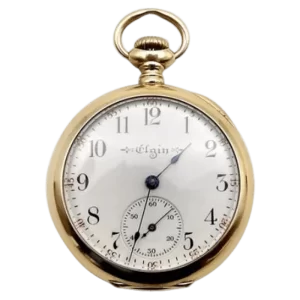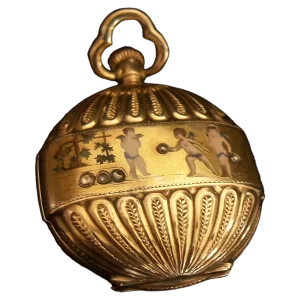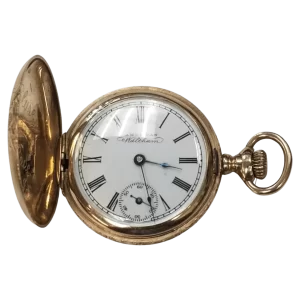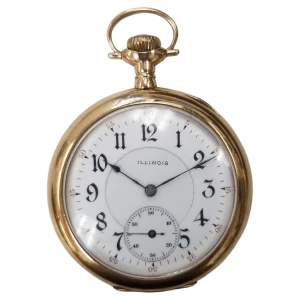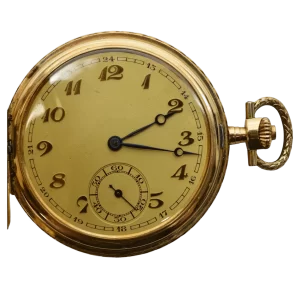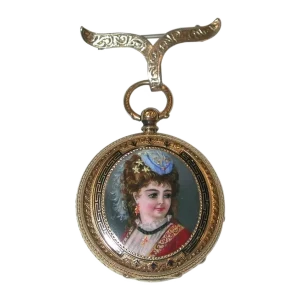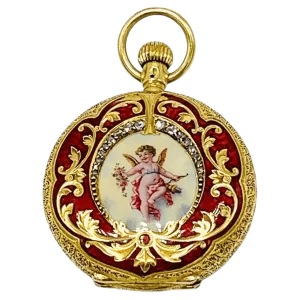Determining the value of an old, antique or vintage watch can be a fascinating journey, blending the intricacies of horology with the allure of history and craftsmanship. Whether inherited or acquired, these timepieces often hold not only sentimental value but also potential monetary worth. In today’s market, where the appreciation for vintage watches has surged, understanding the elements that contribute to a watch’s value is essential for owners and collectors alike. From the watch’s brand and model to its condition and provenance, each factor plays a critical role in its overall valuation. The watch’s rarity and historical significance can further enhance its desirability among enthusiasts. Additionally, original features such as the movement, dial, and case materials are scrutinized by experts to ascertain authenticity and worth. In this article, we will delve into the key indicators that determine the value of vintage and antique watches. We will explore how to assess these elements accurately and the resources available to guide you in your appraisal journey. Whether you’re considering selling, insuring, or simply curious about your timepiece, this comprehensive guide will equip you with the knowledge to navigate the intricate world of vintage watch valuation with confidence and insight.
Identifying Watch Brand and Model
When discerning the brand and model of a watch, several intricate details are vital for accurate identification. One of the primary indicators is the watch’s dial, where the brand name is often prominently displayed. However, this is not always the case, especially with vintage watches where branding may be subtle or have faded over time. Thus, examining the movement, typically found by opening the watch’s case back, can reveal crucial information. This part of the watch often has engravings indicating the manufacturer and sometimes the caliber number, offering a more definitive identification method. Additionally, the presence of serial numbers on the case or movement can be cross-referenced with brand databases to ascertain the watch’s authenticity and production date.

Materials and craftsmanship also serve as key indicators of a watch’s origin. High-end brands often utilize specific materials, such as precious metals, particular alloys, or unique crystals, which are indicative of their luxury status. Furthermore, the complexity and precision of the watch’s mechanics can speak volumes about its provenance. Brands known for their horological innovations often incorporate distinct features and complications that set them apart from more commonplace models. A thorough examination, potentially with the aid of a loupe or professional appraiser, can help in identifying these elements and thus, determine the watch’s brand and model with greater accuracy.
Checking Condition and Functionality
assess the overall credibility of the timepiece. Carefully inspecting the condition and functionality of a watch is a crucial step in evaluating its value, particularly for older or vintage models. Begin by examining the case and bracelet for any signs of damage, such as scratches, dents, or signs of previous repairs. These can significantly impact the watch’s value, especially if they alter the original aesthetics or structural integrity. The condition of the crystal—whether it is scratched, cracked, or has been replaced with a non-original part—should also be scrutinized, as it can affect both the watch’s appearance and its ability to prevent dust or moisture ingress.
In terms of functionality, assess the movement to ensure it operates smoothly and maintains accurate timekeeping. It is advisable to have a watchmaker perform a detailed inspection to check for wear in the movement, potential rust, or any replaced components that could indicate extensive servicing. The watch’s ability to wind correctly, whether manually or automatically, alongside the smooth functioning of features such as chronographs or date complications, is essential for confirming its mechanical integrity. A watch that functions well and maintains its original parts is often more valuable, reflecting both the craftsmanship of its era and the care it has received over the years.
Assessing Materials and Craftsmanship Quality
Evaluating the materials and craftsmanship quality of a vintage watch is crucial in determining its true value. Start by identifying the materials used in the construction of the watch, as high-quality materials like 18k gold, platinum, or stainless steel can considerably enhance its worth. Ensure that any precious metals are hallmarked and authenticate their purity through professional testing if necessary. Furthermore, examine the watch’s dial and hands for signs of wear or replacement, as original components typically preserve the piece’s value better than substituted ones.
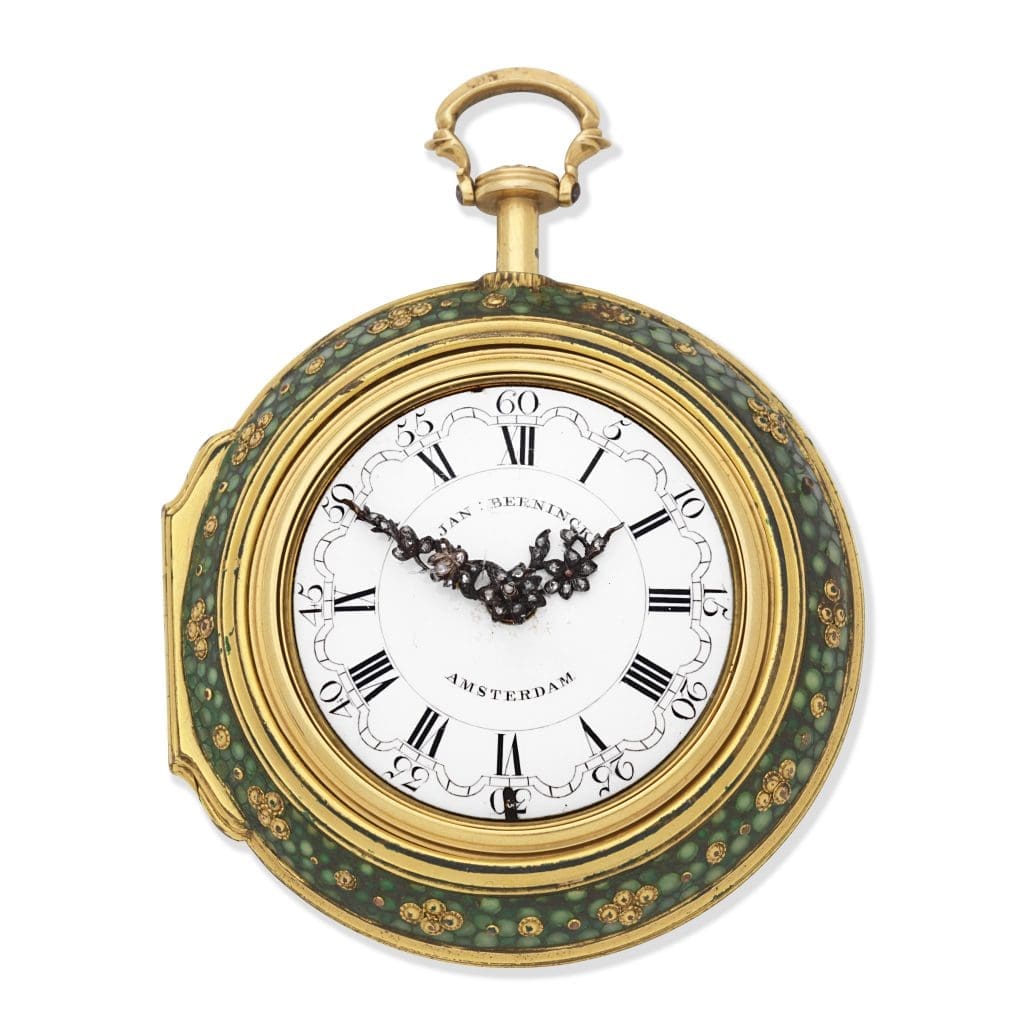
Craftsmanship plays a pivotal role in the appraisal process, as well-crafted watches are often associated with renowned brands or skilled artisans, thus commanding higher prices. Pay particular attention to the intricacy of the watch’s movements and the precision of its assembly. Unique or complex features, such as complications or hand-finished movements, can significantly increase a watch’s value. The level of detail in the engravings and the quality of the finishing on both visible and internal components also provide insight into the overall craftsmanship. Engaging with historical records or brand archives can further affirm the authenticity and quality of the craftsmanship, offering a more comprehensive understanding of the watch’s potential value.
Evaluating Rarity and Limited Editions
When assessing the rarity and limited edition status of a vintage watch, it is essential to delve into the history and production details of the timepiece. Limited edition watches are often released in small quantities, making them inherently more exclusive and desirable to collectors. Investigating the total number of units produced and the specific number of your watch within that series can offer insights into its scarcity. Additionally, limited edition watches frequently come with unique design elements or commemorative features that distinguish them from standard models, further enhancing their collectible appeal.
The rarity of a watch can also be influenced by factors such as its age, the manufacturer’s production decisions, and market demand. Watches that have been discontinued or those from brands no longer in operation can attract significant interest due to their scarcity. Furthermore, variations or errors in production that were not intended can sometimes result in unique versions of a watch that are highly sought after by collectors. Understanding these nuances, along with consulting expert evaluations and provenance documentation, can aid in accurately adjudicating the rarity and potential value of a vintage timepiece.
Understanding Watch Movement Types
The heart of any timepiece lies in its movement, which can be broadly categorized into three primary types: mechanical, automatic, and quartz. Mechanical movements are revered for their intricate craftsmanship and engineering, requiring manual winding to operate. These movements consist of numerous tiny components working in harmony, often appreciated by collectors for their historical significance and complex technical artistry. In contrast, automatic movements are a subset of mechanical movements that harness kinetic energy from the wearer’s motion to power the watch, eliminating the need for manual winding and offering a blend of tradition and convenience.

Quartz movements, introduced in the late 20th century, revolutionized watchmaking by offering unparalleled accuracy through electronic components powered by a battery. These movements are generally less intricate and more cost-effective than their mechanical counterparts, making them prevalent in modern timepieces. However, in the realm of vintage watches, quartz movements can also hold value depending on the brand, model, and historical context. Understanding these movement types is crucial not only to appreciate the mechanical ingenuity behind each watch but also in determining its maintenance needs and potential value in the collectors’ market.
Researching Historical Significance and Provenance
Understanding the historical significance and provenance of a vintage timepiece requires a meticulous examination of its origins, manufacturing details, and any notable events it may have witnessed. This involves tracing the watch’s history through serial numbers, maker’s marks, and archival records. Such documentation can illuminate the era in which the watch was produced and the reputation of its manufacturer at that time. Watches connected to significant historical figures, events, or cultural movements tend to command higher interest and value among collectors, as they serve as tangible links to the past.
Furthermore, provenance encompasses the watch’s ownership history, which can significantly impact its desirability and worth. A well-documented lineage, especially one indicating ownership by a prominent individual or inclusion in prestigious collections, can enhance a watch’s value dramatically. In investigating provenance, it’s essential to verify authenticity through certificates, receipts, and other credible sources. This rigorous research not only clarifies the historical context of the watch but also affirms its authenticity, ensuring that its intrinsic and historical worth are comprehensively understood and appreciated.
Consulting with Watch Appraisal Experts
Engaging with watch appraisal experts is crucial for an accurate assessment of a timepiece’s worth, particularly when dealing with vintage or rare models. These professionals possess the expertise to evaluate various aspects such as brand reputation, model rarity, condition, and historical relevance. Their deep understanding of the watch market allows them to provide nuanced insights into current trends and potential value fluctuations. Appraisers often have access to a wealth of resources, including specialized databases and auction results, which aid in establishing a comprehensive understanding of the watch’s market position.

Additionally, watch appraisal experts can offer guidance on restoration decisions, which may affect the watch’s value. They can differentiate between beneficial restorations that preserve original components and alterations that detract from the piece’s authenticity. By consulting with seasoned appraisers, owners gain a clearer perspective on how different factors contribute to the overall value of their watch, enabling informed decisions whether one is considering insurance, sale, or simply gaining a deeper appreciation for their cherished timepiece.
Comparing Market Demand and Trends
In the ever-evolving watch market, understanding and comparing market demand and trends is essential for assessing the potential value of an old or vintage watch. Market demand is often influenced by factors such as brand prestige, historical significance, and current fashion trends. Watches from renowned brands or models associated with iconic moments in history tend to attract higher demand. Additionally, cyclical trends in style preferences—such as the resurgence of retro designs or the growing interest in mechanical craftsmanship—can significantly impact the desirability and, consequently, the value of a timepiece.
Trends in the secondary market, including auction results and collector interest, provide valuable insights into demand shifts. Analyzing recent sales data and observing which models are securing high bids can indicate the market’s current preferences. Furthermore, the global market plays a critical role, as regional tastes and economic conditions can drive demand in different ways. Staying informed about these market dynamics enables watch owners to make educated decisions about the timing of sales or acquisitions, ultimately maximizing their investment’s potential return.
Analyzing Original Packaging and Documentation
The presence of original packaging and documentation can substantially enhance the value of an old or vintage watch. Collectors and enthusiasts often seek watches that come with their original boxes, certificates, manuals, and any additional paraphernalia that accompanied the watch at the time of purchase. These elements serve as a testament to the watch’s authenticity and provenance, instilling confidence in its history and origin. Original packaging and documentation can also highlight unique features or special editions, further distinguishing a piece in the competitive collector’s market.

Assessing the condition and completeness of these materials is crucial, as pristine packaging and untouched documents can significantly bolster a watch’s appeal. The condition can represent the level of care maintained over the years, which collectors often equate with the integrity of the watch itself. Moreover, watches with their original packaging and documentation often have a stronger narrative, as each item can symbolize a specific period or milestone in the watch’s lifecycle. Ultimately, these factors contribute to a watch’s historical and financial value, influencing both collector interest and potential resale value.
Verifying Authenticity and Serial Numbers
A crucial aspect of evaluating an old or vintage watch’s value is the verification of its authenticity and serial numbers. Serial numbers, often engraved or printed on the case back or movement, serve as unique identifiers that can be cross-referenced with manufacturer records to confirm the watch’s originality and production date. This verification process aids in distinguishing genuine pieces from replicas, providing assurance to potential buyers and collectors about the watch’s legitimacy. Authentic watches with verifiable serial numbers tend to command higher prices, as they embody the brand’s heritage and craftsmanship.
Furthermore, serial numbers can also reveal critical information about a watch’s history, such as its model type, production year, and any special edition status. Consulting with brand archives or utilizing third-party authentication services can provide insights into the serial number’s validity, ensuring the watch aligns with its purported specifications. This meticulous scrutiny not only authenticates the watch but also enhances its collectible status, appealing to those who value provenance and historical significance. Collectors often regard the verification of authenticity and serial numbers as an essential part of due diligence, underscoring its importance in the valuation process.
FAQ
What brand and model is my watch, and how does its reputation affect its value?
To determine the brand and model of your watch, check the watch’s case back, dial, or papers. Luxury brands like Rolex, Patek Philippe, and Audemars Piguet often carry high reputations, significantly enhancing their value due to quality craftsmanship, heritage, and demand. Conversely, lesser-known brands may have lower resale values. A strong reputation can lead to appreciation over time, making well-regarded models sought after by collectors, thus affecting their market value positively. Always consider the watch’s condition, rarity, and provenance, as these factors also influence its worth.
– Understanding the brand’s history and the specific model’s desirability can significantly influence the watch’s market value.
Understanding a watch brand’s history and the desirability of specific models is crucial for assessing market value. Brands with a rich heritage often command higher prices due to their craftsmanship, reputation, and legacy. Limited editions or models associated with significant events or personalities tend to be more sought after, driving demand and value up. Conversely, models with less historical significance may not appreciate as much. Collectors and investors typically prioritize pieces with a compelling story, making brand history and model desirability key factors in valuation within the watch market.
–
Are there any unique features or complications that set my watch apart from others?
Yes, your watch may have unique features like a custom movement, specialized complications (e.g., moon phase, perpetual calendar), or exclusive materials (e.g., ceramic, rose gold). Additionally, limited editions or collaborations with artists can enhance its uniqueness. Complications such as GPS functionality, smartwatch capabilities, or advanced water resistance can also set it apart from traditional timepieces. Furthermore, design elements like a distinctive dial, unique hands, or innovative strap materials contribute to its individuality. Each watch tells a story, reflecting its craftsmanship and the brand’s heritage.
– Special features, limited editions, or unique craftsmanship can enhance a watch’s value.
Special features, limited editions, and unique craftsmanship significantly enhance a watch’s value. Limited editions often feature exclusive designs or materials, appealing to collectors. Unique craftsmanship, such as hand-finished details or innovative complications, showcases the watchmaker’s artistry and skill, further elevating its desirability. Additionally, special features like advanced technology, heritage, or historical significance can increase a watch’s rarity and appeal. Collectors and enthusiasts often seek these attributes, driving demand and boosting market value, making such watches not only functional timepieces but also valuable investments.
–
What is the condition of my watch, and how does it impact its worth?
The condition of your watch significantly impacts its worth. A well-maintained watch with minimal scratches, fully functional parts, and original components typically commands a higher price. Conversely, a watch with visible damage, non-functioning parts, or missing original elements may be valued much lower. Factors like brand reputation, rarity, and service history also play a role. To assess its true worth, consider having it evaluated by a professional appraiser or a reputable jeweler. Regular maintenance and proper care can enhance its longevity and value over time.
– Evaluating the watch’s physical condition, including any wear, damage, or restoration work, is crucial in determining its value.
Evaluating a watch’s physical condition is essential for assessing its value. Key factors include examining for wear, scratches, dents, and any signs of damage. It’s also important to consider any restoration work, as improper repairs can reduce value. Original parts and authenticity enhance worth, while significant modifications may detract. A thorough inspection, ideally by a professional, helps identify these elements, ensuring an accurate valuation.
–
Is there any documentation or provenance associated with my watch?
To determine if there is documentation or provenance associated with your watch, check for the original purchase receipt, warranty papers, and any service records. Contact the brand’s customer service or authorized retailers for historical details. Additionally, consult online databases or watch forums for similar models that may provide insights into your watch’s history. If it’s a luxury or vintage piece, authentication services could help verify its provenance.
– Original papers, boxes, and service history can add to a watch’s value, as they provide authenticity and history.
Original papers, boxes, and service history significantly enhance a watch’s value by confirming its authenticity and provenance. These items serve as proof of the watch’s origin, prior ownership, and maintenance, making it more appealing to collectors and enthusiasts. A watch accompanied by its original documentation is often perceived as more desirable, leading to higher resale values. Furthermore, detailed service records indicate proper care, which can assure potential buyers of the watch’s condition and reliability, ultimately contributing to its overall worth.
–
How do current market trends and recent auction results affect the valuation of my watch?
Current market trends and recent auction results significantly influence your watch’s valuation by reflecting demand, rarity, and condition. If similar models are fetching high prices at auctions, it suggests increased desirability, potentially raising your watch’s value. Conversely, a decline in auction prices may indicate oversupply or reduced interest, which could lower its worth. Additionally, market trends, including shifts in collector preferences and economic factors, also play a role. It’s essential to stay informed about these dynamics to accurately assess your watch’s current market value.
– Researching recent sales and market demand for similar watches can provide insight into how much your watch might be worth today.
To determine the current value of your watch, research recent sales of similar models through online marketplaces, auction sites, and watch forums. Analyze market demand by examining trends in pricing, condition, and rarity. Pay attention to brand reputation and any unique features that could enhance value. Additionally, consult watch appraisal services or expert reviews for a comprehensive understanding of your watch’s worth. This research will help you set a realistic price if you plan to sell or insure the watch.
–
What are the key factors that determine the value of a vintage watch?
The value of a vintage watch is determined by several key factors: brand reputation, rarity, condition, age, and provenance. High-end brands like Rolex or Patek Philippe typically command higher prices. Rarity increases desirability, while a watch in excellent condition can significantly boost its value. Age can enhance appeal, especially if the model has historical significance. Provenance, or the watch’s history, including previous ownership and documentation, also plays a crucial role. Lastly, market trends and demand within the collector community can influence pricing.
–
How can I verify the authenticity of my vintage watch to ensure it is not a replica?
To verify the authenticity of your vintage watch, start by researching its brand and model for specific features. Examine the watch’s serial and model numbers, usually found between the lugs or on the case back, and compare them with official records. Inspect the craftsmanship, materials, and movement for quality; replicas often have inferior components. Seek expert appraisal from a reputable watchmaker or authorized dealer. Additionally, check for original documentation, such as certificates or receipts, and consider joining watch forums for community insights. Always purchase from trusted sources to reduce the risk of acquiring a replica.
–
What role do brand reputation and watch rarity play in assessing the value of my old watch?
Brand reputation significantly influences a watch’s value, as established brands often command higher prices due to their perceived quality and desirability. Rarity also plays a crucial role; limited production models or unique features can enhance a watch’s collectability and market demand. Together, these factors create a perception of exclusivity, increasing potential resale value. When assessing your old watch, consider both the brand’s standing in the market and its uniqueness to determine its worth accurately.
–
Are there specific features or complications in vintage watches that significantly increase their market value?
Yes, several features and complications in vintage watches can significantly increase their market value. Notable factors include rarity, brand reputation, and historical significance. Complications like chronographs, perpetual calendars, or tourbillons enhance desirability. Originality, such as having the original box, papers, and unaltered parts, also boosts value. Limited production runs or association with prominent figures can elevate a watch’s status. Condition, provenance, and even specific reference numbers further influence market demand and pricing, making certain vintage watches highly sought after by collectors.
–
How can I research the historical significance and market trends for my vintage watch to better understand its potential worth?
To research your vintage watch’s historical significance and market trends, start by identifying its brand, model, and production year. Use online resources like watch forums, auction sites, and dedicated vintage watch databases. Consult price guides and market reports to track recent sales and trends. Engage with watch collectors through social media or local clubs for insights. Additionally, consider reaching out to appraisers or experts for a professional evaluation. Combining these resources will give you a comprehensive understanding of your watch’s value and historical context.


